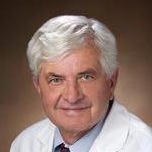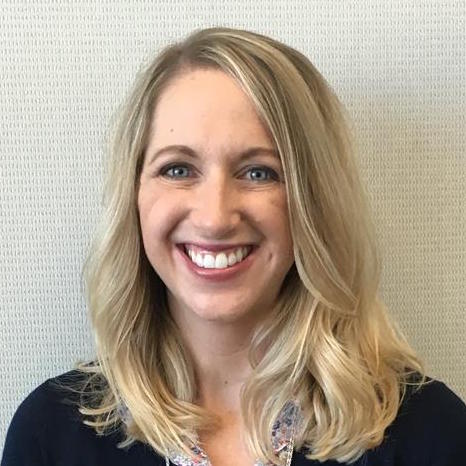When you think of melanoma, you picture the sun. But there is another class of these dangerous cancers that has nothing to do with sun exposure. Mucosal melanomas arise seemingly spontaneously from mucosal tissues, accounting for about 1.3 percent of all melanomas. In part because most of these tissues are hidden, mucosal melanomas tend to be diagnosed late. Late diagnosis combined with lack of response to many newer treatments (especially immunotherapies), leads to a 5-year survival rate for rare melanomas less than half that of the more common form of the disease.
Mucosal melanomas include those of the mouth, nose, vagina, and rectum. Other rare melanomas can arise in the back of the eye (ocular melanomas), or on the bottom of the feet and palms of the hands (acral melanomas). Together these rare melanomas result in about 2,000 cases per year, many with poor prognosis.

“Sun-exposed melanoma is clear: You go out and get burned and you get skin cancers including melanoma. But mucosal, acral, and ocular melanomas are different. We’re still in the early stages of understanding what creates these diseases and how to best treat them,” says William Robinson, MD, PhD, University of Colorado Cancer Center investigator and professor of Medical Oncology at the CU School of Medicine.
Now, building on a unique expertise developed while researching and treating Colorado’s mile-high rate of sun-associated melanoma, CU Cancer Center recently earned National Cancer Institute designation as a Center for Rare Melanomas. The Center was established from a $1.5M award from the Patten Davis Foundation, and will help the team capture data from their clinical efforts that will aid in creating new understanding of, and new treatments for this family of conditions.
“Due to altitude and an outdoor lifestyle, our melanoma rate in Colorado is way above the national average. The number of cases we see helped make us a major partner in developing new therapies for melanoma, and we were also in a unique position to notice that these rare melanomas don’t respond to the same treatments. We know they’re different from a molecular point of view. The objective is to get the research materials needed to find new, effective therapies,” Robinson says.
At UCHealth University of Colorado Hospital, rare melanoma treatment takes place in a multidisciplinary clinic. Traditionally, in order to design a treatment plan, patients require a half-dozen or more appointments for imaging, pathology, and consultations with surgical, radiation, and medical oncology teams. The process can take weeks if not months. A specialized, multidisciplinary clinic streamlines this process, with cases presented to a room of 20 or more experts at once, who consult (and argue), and then communicate treatment recommendations to a patient all in one day.
Over the years, Colorado researchers have been able to use this reputation for clinical excellence to gather the nation’s most comprehensive library of melanoma samples. Basically, when a patient’s cancer is surgically removed, a sample of that cancer can be stored for research. What kills melanoma cells? By testing new drugs against real, human samples of the disease, researchers can find out.
However, mucosal melanoma is so rare that building a library of samples requires years. Any single tumor has so many genetic changes that it is impossible to tell what changes are creating the cancer and what changes happen to be along for the ride. But if many cancers have the same change, it can hint at a genetic cause of cancer, and thus a new drug target. This, of course, requires many cancer samples.

“We want to increase samples from specific sites, especially those sites that are so rare that research hasn’t been possible before,” says Kasey Couts, PhD, assistant research professor at the CU School of Medicine. “New funding will allow us to concentrate the research effort, in particular, on these unusual melanomas – research that we can take back to the clinic.”
Already, Couts’s work is showing results, for example showing that rare melanomas have an abnormally high number of “fusion” genes. These fusion genes, created when bits of one chromosome are mashed together with bits of another, have been implicated in many cancers, most notably lung cancers, in which ALK-fusion and ROS1-fusion genes are targeted by FDA-approved medicines to silence their action. If fusion genes prove not only coincidental, but causal in mucosal melanoma, the path to new drugs against the disease could be fairly direct.
Additionally, immunotherapies have revolutionized the treatment of many sun-exposed melanomas (e.g. that of Jimmy Carter). However, these same therapies have been hit-or-miss with mucosal and ocular melanoma.
“We think immunotherapy approaches will work, but it’s not going to be the same approach that we can use for sun exposed melanoma,” Couts says. Her work shows a signaling pathway that may, when activated using targeted therapy, be able to re-sensitize mucosal melanoma to immunotherapies (Couts will present this new research at the Society for Melanoma Research Annual Conference, November 22 in Salt Lake City). “We’re starting to understand why they’re not responding to treatment,” Couts says, “and that understanding can lead to new strategies to make them respond.”
Another hypothesis is that mucosal melanomas may have a viral or fungal cause, in much the same way that cervical cancer can be caused by HPV infection. “Funding gives us money to do research on these underlying causes. It’s really giving us the tools to do more research in areas that may not be funded by traditional grants,” Couts says.
Few single centers are in a position to research rare cancers – they simply don’t see enough cases to make concrete conclusions. Colorado’s longtime reputation as a leader in melanoma treatment offers a special opportunity, the opportunity to finally see enough cases of mucosal, acral, and ocular melanoma to make real inroads against these diseases. Now NCI recognition and grant support make this possible.
“We want people to know that if a patient has rare melanoma, we have a resource here in Colorado,” Robinson says. Soon these resources may include new treatments built on the group’s understanding. For more information, visit the Center’s brand new website.






